Discrepancies in MDCAT leave medical students a nervous wreck
KARACHI: For 17-year-old Ali (name changed), this year’s Medical and Dental College Admission Test - or the MDCAT as it is referred to - was a chance to redeem himself and pursue his dream of becoming a doctor. It’s actually his parents dream but he has embraced it. An exceptional student throughout his school and college years,he got more than 85% in both matric (tenth grade) and inter (grade 12). But he wasn’t successful at the MDCAT on the first attempt after a bout of pneumonia hampered his preparations.
He spent the next year holed up at his ancestral home in the small town of Depalpur in Okara district. Ali quickly points out that it is the biggest sub-district of Pakistan. And that Google will confirm it.
Ali did venture to Lahore, a three-hour drive on one of the country’s best highway. It is where he went to college - the Forman Christian Colleg. His elder was also there pursuing a law degree.
But his was always November 13, the date of the MDCAT. He even welcomed the delay in the entrance test - due to the unparalleled floods - as it gave him more time to prepare.
In for a shocker
The entrance test coincided with the Pakistan-English final in the T20 World Cup. Despite being a cricket fan, Ali wasn’t thinking about the match. He doesn’t play much cricket either because ‘when you study medicine, there really is no time to play cricket’.
For a full year leading to that day, his focus had been the entrance test.
In the test, things didn’t go as planned. He did not know the answer to the second question. Despite multiple choices, he was at a loss. He guessed through some while struggling with others. Every time he was on track, there would be another question that had him questioning his own intelligence. He would find out later that he had never studied it.
The three-and-a-half hour exam started simultaneously at 11am Pakistan time in the four provinces, Islamabad, Kashmir and Gilgit. and and for students in Saudi Arabia and the UAE.
Outside the test arena, he heard other students voicing the same concerns. For Ali, the match was an afterthought even if Pakistan had a whisker of hope.
There was a lot of noise but there was consensus on one thing: some questions were out of syllabus. Most agreed that there were at least a dozen such questions. Others said that the number could be twice as high.
What went wrong
This was the first year time the Pakistan Medical Commission, a replacement of the Pakistan Medical and Dental Council (PMDC), handed over entrance tests to public sector universities. Previously, the tests were created and assessed by the National Testing Service.
This year, over 200,000 students sat for the test at centres across the country. The tests were provided by five universities: one in each province, with the university in Islamabad making it for AJK and Gilgit-Baltistan as well.
Around 83,000 students took the test in Punjab, administered by the University of Health Sciences (UHS) Lahore. A little over 46,000 in Khyber Pakhtunkhwa took the test prepared by Khyber Medical University Peshawari.
In Sindh, 43,994 students took the test managed by the Dow University of Health Sciences (DUHS). In the capital Islamabad, Shaheed Zulfikar Ali Bhutto Medical University (SZABMU) took the test of 17,825 aspirants.
The Bolan University of Medical and Health Sciences (BUMHS) was the relevant university in Balochistan, with 9,238 applicants. Another 2,718 took the test in Azad Jammu and Kashmir (AJK), 645 in Gilgit, 222 in Saudi Arabia, and 240 in the United Arab Emirates.
Each university was responsible for creating its own test based on the text books taught at the intermediate/FSc (Faculty of Science) level. Questions were from physics, biology and chemistry with a component of English and logical reasoning.
Students say that some of the questions in the test containing 200 MCQs were not part of the syllabus they were taught.
Several students shared snippets of the MCQs on social media. Here are two specimens:


The Peshawar High Court, on a student’s petition, has suspended the results of the test conducted in the province on Nov 13 until issues of “transparency and competition” are resolved.
Students in Sindh and Balochistan have taken to social media to voice their grievance.
“Most of the questions are from the text books of the federal board,” another student told Aaj Digital.
At 9pm that day, there was another shock for the test takers including Ali.
Some of the answers that he thought he knew turned out to be wrong. He barely had passing marks. It made him wonder whether he ready for the rigours of medical school.
Soon, other students were talking about problems with the answer key that was uploaded. Ali said that the same thing, and voiced the same concern.
“The optical mark reader will assess our answers based on the key. This which mean that we will get no marks for those correct answer.”

The flurry of testimonies and the flood of memes meant it snowballed, to the point where relevant hashtags became momentary trends on Pakistani Twiter.

The response (or lack thereof)
Despite the social media uproar, the army of students and their parents, and incosistent reporting, the response from the universities and the council has been wishy-washy.
The PMC says preparing the test and assessing results was the responsibility of the university that conducted the test in that particular province or region.
It initially issued a notification saying that students would be awarded ‘grace marks’ if discrepancies were found in the test. It quickly withdrew and passed the buck completely to the universities.

The PMC has received registration fee of Rs6,000 paid by more than 200,000 test takers. This means a revenue of Rs1.2 billion. It will pay a sum to the universities for creating and conducting the test and collating results.
Jawad Amin Khan, a member of PMC and its Sindh coordinator, said that the contracted universities were reviewing the questions in their respective tests. “Once they tell us about the discrepancies, then we will take a decision.”
I asked him whether the students would be given any marks to make up for the questions that shouldn’t have been on the test.
“The students will receive compensatory numbers - and not grace marks - in case any questions are found to be out-of-syllabus, with one mark added to the candidate’s total for each such question.”
He didn’t clarify whether that one additional mark would be given to all the students who took the test prepared by that university or only those who got the answer wrong.
The MDCAT result was originally scheduled for November 19 but Khan said that it might be delayed ‘by a couple of days’ as their biggest concern remained the ‘future of the students’.
One student had asked why lead pencils were used to fill the answer sheet. The questioner was concerned that the answer sheets might be tampered with. Khan said that it was for the optical mark reader that would be used for assessing answer sheets. It’s a practice across the standardized testing industry. It also means easier to erase the wrong answers.
He assured of transparency in test results, saying this was the first time students were provided carbon copies of their answer sheets. “They can match their answers with uploaded key. In case of any discrepancy, they can easily challenge the result.”
The universities in question, however, have been more elusive.
One student shared their email to the UHS Lahore and said there had been no response.
Students from other provinces have raised similar concerns and blamed the universities of apathy - towards their ‘own mistakes in the MCQs, the errors in the answer key and the future of tens of thousands of future doctors and dentists’.
No university barring Islamabad’s SZABMU has acknowledged the error and oversight.

Uncertainty looms
As per to the ‘erroneous answer key’ and including the out-of-syllabus questions, Ali says he has more marks than required to pass the test. It’s threshold is 55% percent for medical college admission and 45% for dental college application.
However, he is no where close to getting the required marks that would get him a place on merit in a public sector medical college. This would be between Rs500,000-Rs750,000 annually. On self-finance, the fee almost doubles. At a public university, the total cost of education over the five years of medical school can be anywhere between Rs3.5 million to Rs8million.
At most private medical colleges, the five year tuition fee totals above the Rs7.5 million mark, with Karachi’s prestigious Aga Khan University the most expensive charging close to Rs1.25 million in tuition fee alone. It charges its students another Rs1.3 million annually as university fee.
This makes things rather tricky for Ali and his family of modest means. His father owns a small piece of land and some savings. But there is also his brother studying law in Lahore and then a younger one who just got done with tenth grade.
The mess with the MDCAT has left Ali unsure of how things will pan out but he remains cautiously optimist of having his redemption song.
“Even if I don’t get into a public university, I will study medicine and become a doctor. The affordability will figure itself out one way or the other.”
For the latest news, follow us on Twitter @Aaj_Urdu. We are also on Facebook, Instagram and YouTube.



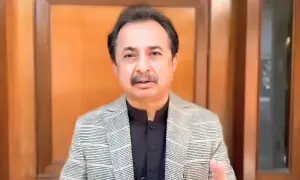

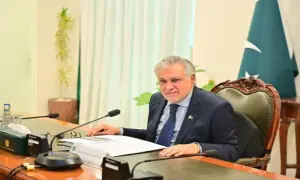
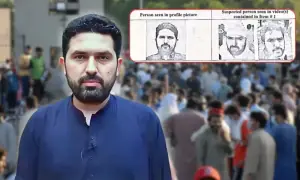
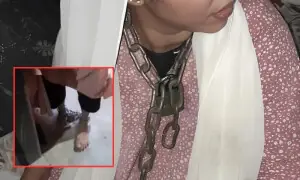
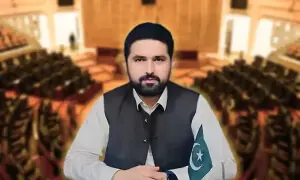



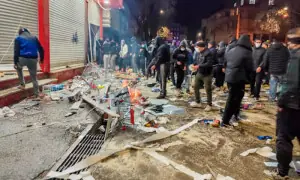
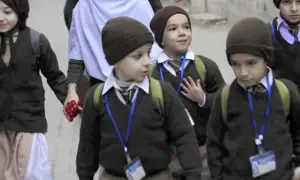

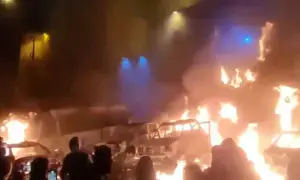
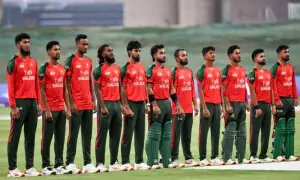
Comments are closed on this story.